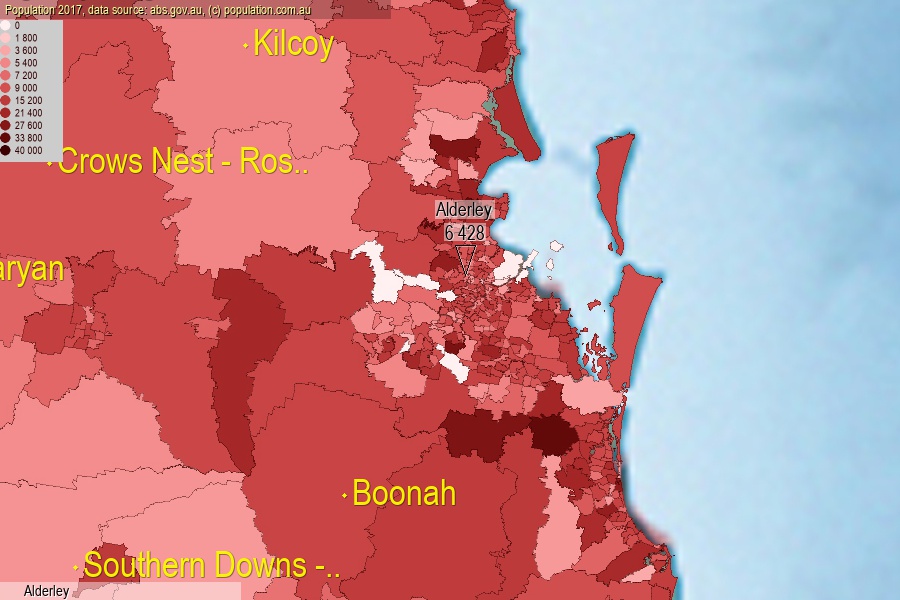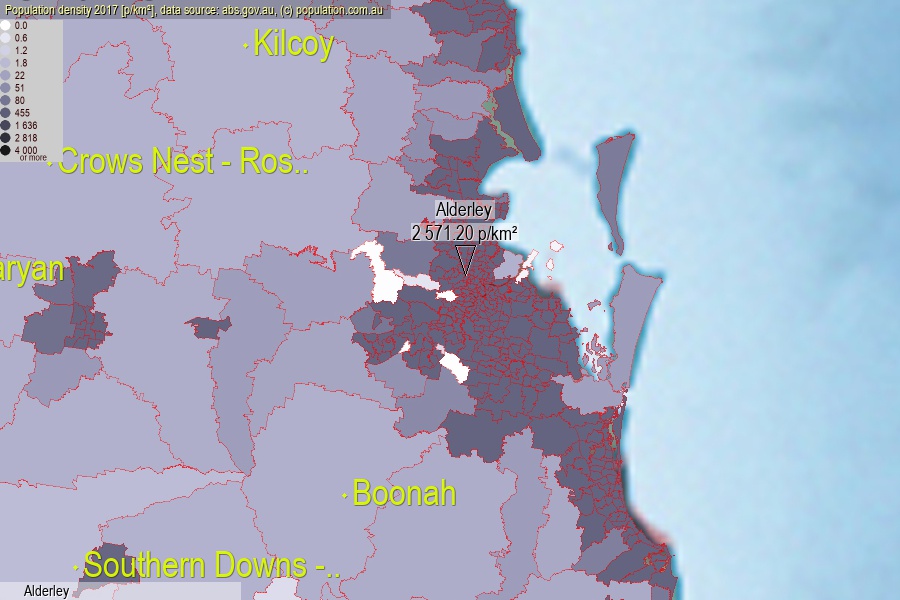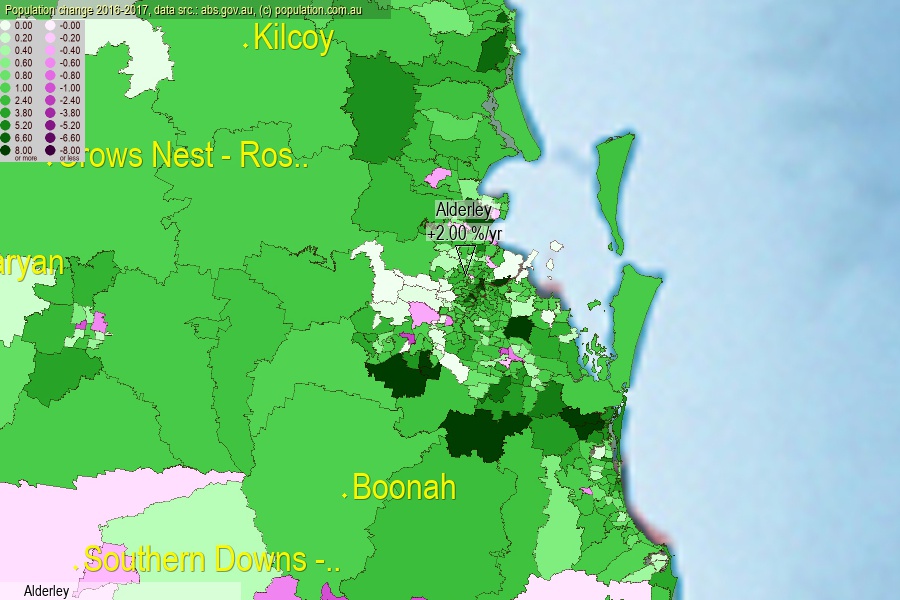 population.com.au
population.com.auLast official estimated population of Alderley (as Statistical Area Level 2) was 6 428 people (on 2017-06-30)[2]. This was 0.03% of total Australian population and 0.129% of QLD population. Area of Alderley is 2.50 km², in this year population density was 2 571.20 p/km² . If population growth rate would be same as in period 2016-2017 (+2%/yr), Alderley population in 2025 would be 7 531. [0]



Click to enlarge. Alderley is located in the center of the images.
Population [people], population density [p./km²] and population change [%/year] [2]
View borders » (new window) [4]
[1991-1992] -0.41 %/Yr.
[1992-1993] -0.39 %/Yr.
[1993-1994] -0.26 %/Yr.
[1994-1995] +0.48 %/Yr.
[1995-1996] +1.62 %/Yr.
[1996-1997] +0.15 %/Yr.
[1997-1998] +1.48 %/Yr.
[1998-1999] +0.79 %/Yr.
[1999-2000] +1.22 %/Yr.
[2000-2001] +0.66 %/Yr.
[2001-2002] +1.85 %/Yr.
[2002-2003] +0.48 %/Yr.
[2003-2004] +1.57 %/Yr.
[2004-2005] +0.74 %/Yr.
[2005-2006] +2.16 %/Yr.
[2006-2007] +1.39 %/Yr.
[2007-2008] +3.34 %/Yr.
[2008-2009] +3.70 %/Yr.
[2009-2010] +1.45 %/Yr.
[2010-2011] +2.36 %/Yr.
[2011-2012] +2.01 %/Yr.
[2012-2013] +0.40 %/Yr.
[2013-2014] +1.32 %/Yr.
[2014-2015] +1.14 %/Yr.
[2015-2016] +1.25 %/Yr.
[2016-2017] +2.00 %/Yr.
[0] Calculated with linear interpolation from officially estimated population
[1] Read more about SA2 and Australian Statistical Geography Standard (ASGS) on abs.gov.au
[2] Population data from Australian Bureau of Statistics (Population and density: 2017; change: 2016-2017)
[3] Digital Boundaries: Australian Statistical Geography Standard (ASGS) 2016.
[4] Border coordinates are simplifyed using Ramer-Douglas-Peucker algorithm.